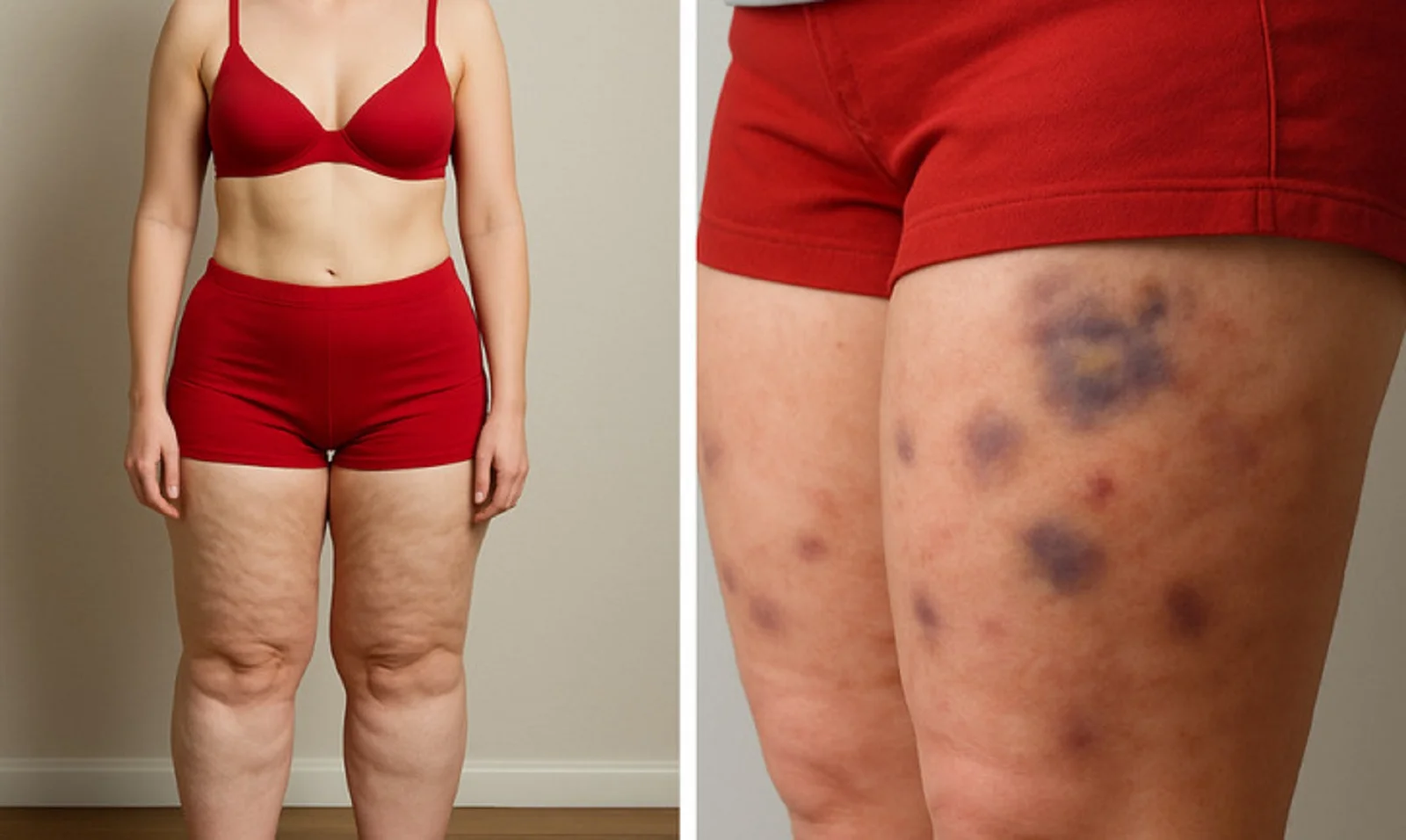Lipedema is a little-known but surprisingly common condition that leads to painful fat buildup, usually in the legs, thighs, and sometimes the arms. Because it often resembles weight gain, many people—and even doctors—confuse it with obesity. What makes lipedema different is that the fat is resistant to diet and exercise, often painful, and can trigger swelling and bruising. It mainly affects women, often appearing during puberty, pregnancy, or menopause.
If you’ve struggled with stubborn, painful fat that doesn’t respond to traditional weight loss, these quiet symptoms may reveal more than just “extra weight.”
DISCLAIMER: This content is for informational purposes only and should not replace professional medical advice. Always consult your doctor regarding your health.
1. Hidden lumps beneath the skin
One of the most telling signs is the presence of tiny, firm bumps under the skin—often compared to “peas” or “grains of rice.” These nodules aren’t visible but can be felt when pressing on areas like the thighs, buttocks, or arms. They develop because of fibrotic changes in the fatty tissue, creating tenderness and discomfort.
2. Easy bruising
People with lipedema often notice bruises appearing out of nowhere—even from mild pressure or small bumps. This happens because fragile blood vessels in the affected fat break easily. The bruises usually show up on the legs, thighs, or arms and can be both painful and emotionally distressing.
3. Symmetrical fat buildup in the lower body
Lipedema fat tends to collect in the buttocks, thighs, and calves, creating a disproportionately larger lower body compared to the upper body. Unlike typical weight gain, this fat is symmetrical, resistant to diet or exercise, and often painful to the touch. Over time, it can also interfere with mobility.
4. Chronic pain and tenderness
Pain is one of the most difficult aspects of lipedema. It can range from mild sensitivity to severe, ongoing discomfort. The pain is often triggered by touch, movement, or pressure and is linked to inflammation, tissue pressure, and sometimes nerve irritation.
5. Loose or sagging skin
As the condition progresses, the abnormal fat places extra stress on the skin’s connective tissues. This can cause the skin to lose elasticity, leading to sagging or large folds. These changes don’t just alter body shape—they also add to the physical and emotional burden of the condition.
Final note
Lipedema is not simply “obesity” or “weight gain.” It’s a medical condition that deserves recognition and treatment. If these symptoms sound familiar, the next step is to talk with a healthcare professional who understands lipedema.







